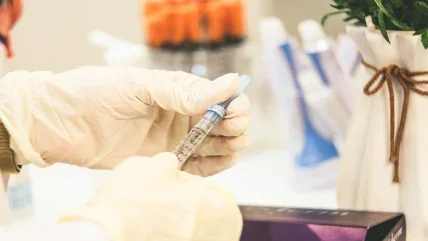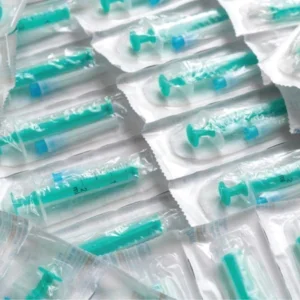
The popularity of comparator drugs in clinical trials continues to grow – during 2005–17, almost half of all phase-III trials were comparatorcontrolled. The figure was even higher for trials of oncology drugs, with nearly two thirds of phase-III trials using a comparator drug. It’s not hard to understand the reason why comparators are supplanting placebos in clinical trials. The clear benefit is that the trial can demonstrate whether the drug under investigation provides a genuine advantage over the best already available.
Pressure to use comparators rather than placebos comes from players and regulators, such as the FDA, who want to avoid approving new drugs that may be less effective or less safe than existing ones.
That isn’t the only driver, however. Increasingly, it is possible for several experimental drugs to be tested at the same time, and there has also been a rise in the use of combined therapies for some diseases, such as certain types of cancer.
There are also sound ethical reasons for using comparator studies. Giving a placebo to seriously ill patients is hard to justify when those patients might die sooner without drug treatment. It is easier to recruit patients to a trial if they can be sure they are going to receive an active drug rather than a placebo.
Comparator versus placebo
It is undoubtedly the case, however, that carrying out a trial using a comparator drug is more challenging than using a placebo – not least because the provider of the comparator drug has no incentive to take part in a trial that may lead to its product being superseded.
The cost of using a comparator drug is far higher than that of using a placebo – one report by the Tufts Center for the Study of Drug Development (CSDD) found that up to half of a clinical supply budget may go on comparators. And sourcing a comparator is undoubtedly a complex process, as drug development increasingly takes place across national borders. In particular, sponsors are choosing to carry out more clinical trials in emerging markets to reduce drug development costs. By 2020, the volume of clinical trials carried out in emerging markets will be equal to those carried out in the US and Europe combined.
But when clinical trials are carried out in China, Africa and the Middle East, as well as the US and Europe, the supply chain and regulatory challenges increase considerably. Supply chain security may be inadequate and obtaining the relevant documentation can be difficult. If the comparator drug is sourced from outside the country where the trial is being carried out, for example, it may be that imports of the product are banned, and in some countries an import permit will have to be applied for. The rise in counterfeit drugs is proving a particular hazard. Comparators will also need bespoke labelling, so that clinical staff in each country are aware of the correct handling of the drug.
All this creates a headache for trial sponsors, who understandably want to keep costs low and have a supply chain that is straightforward to manage. When it comes to sourcing comparator drugs effectively, a number of decisions have to be made. The industry is using a wide range of models, all of which have their pros and cons.
Open label versus blind
One of those decisions is whether to use an open label comparator drug, enabling researchers and patients to see what drug is being administered. This is an easy option, but flouts the important principle of doubleblinding. Most trial sponsors will choose to offer the drug blind, making the product indistinguishable from the drug under development, usually through overcoating. As well as being time consuming, it creates another potential supply chain issue – some countries may wrongly identify an overcoated product as counterfeit. There may also be legal issues relating to the trademark.
Manufacturer versus wholesaler
Another decision is whether to procure the comparator drugs directly from the manufacturer or supplier, or from the wholesale market. Going directly to a manufacturer makes it possible to source a single lot of the drug with a long shelf life and specific batch numbers. Resupply costs are lower, and it is easier to meet regulatory approval. It also reduces the risk of counterfeit drugs entering the supply chain. On the downside, some manufacturers can take several months to produce a large batch, and going directly to the manufacturer alerts them to the fact that a rival drug is in development.
Using a wholesaler, on the other hand, brings a different set of challenges. Writing for World Pharmaceutical Frontiers last year, Cristina Chang, then vice-president of global clinical development and medical affairs at OBI Pharma, wrote, “Wholesalers may not be able to provide large single-lot batches with long expiration dates. The trial sponsor may have to buy the comparator in multiple lots, leading to clinical inconsistency. This can create significant operational challenges, as well as more paperwork to address audits or even recalls.”
Another difficulty is that a wholesaler may not be compliant with sourcing regulations in different countries, or the different import and export requirements. An important part of the sourcing process is to acquire the correct documentation from the manufacturer, demonstrating the chain of custody from the original source to the point of delivery. It is not always possible to obtain this documentation when sourcing from a wholesaler, however, creating a risk of non-compliance with regulatory requirements.
Single source versus multiple sources
There is also the question of whether to use a single, or central, source for the comparator drug. In this model, the drug is sourced from one country or region and shipped to the trial sites in other countries. Using a single source is easier to manage and allows consistency in data collected from different trial sites. It can be cheaper to move the comparator from one site to another. But there may be difficulties in obtaining the necessary documentation, and there are risks in relying on a single source. In some countries, drugs are locked in for use in hospitals, making central sourcing a challenge. In an interview with World Pharmaceutical Frontiers, Niklas Mattson, head of comparator sourcing at MSD, said, “Real central sourcing, in this context, is the hospital pharmacy just picking the drugs at the site of use. In this situation, you may have to source from one vendor and arrange some kind of hybrid model of central and local.”
Further, if the supply of the comparator dries up, then the clinical trial will be cut short, potentially leaving patients without access to a lifesaving drug. The key advantage of using multiple sources is that it greatly reduces this risk, though it adds complexity to the process.
An alternative option, as Mattson suggests, is to use a hybrid model, sourcing centrally and distributing locally, “Then you can have the European drugs for use worldwide, and you have to choose Chinese drugs in China.” It is important, however, to be alert to the possible regional variations in comparators, including the API concentration and the form of dosage.
There is arguably a strong case for sourcing comparator drugs from emerging markets, because of the low cost and greater availability. Transport costs will be higher, however, and the likelihood of counterfeit drugs finding their way into the supply chain is greater. There is also a risk that a product may be licensed in a particular market but not yet available for purchase. All this means that a decision to source comparators from emerging markets requires a good deal of careful planning.
Partner up
Many trial sponsors outsource the procurement of comparator drugs to a sourcing partner. Choosing and briefing a partner can be time consuming, and there is obviously a cost attached to paying an outsourcer, as well as security concerns about using a third party. It may also be harder to obtain the necessary documentation. There are a number of advantages, however. One is that it offers anonymity for the trial sponsor, and a sourcing partner is more likely to have a global network that will enable them to find harderto- source products. Sourcing partners may also have a more detailed knowledge of the relevant regulatory framework – an absolutely critical element in sourcing comparators, as regulatory frameworks are constantly being reviewed. Typically, a sourcing partner will also offer specialist services like cold chain management, particularly important at a time when more biologics are being developed. The partner will also inspect the product before shipment and sign it off.
A locally based sourcing specialist offers the particular advantage of being able to liaise directly with a manufacturer and specify particular requests, such as batch numbers or lengthy shelf life, which offers the trial sponsor more time in which to relabel the drug, as well as reducing the cost of purchasing another supply. It also gives enough time for the drug to be approved by the regulators. The ideal sourcing partner has expertise in local and international sourcing.
Despite the costs involved in outsourcing, there are likely to be long-term savings. A partner is more likely to have the expertise to identify sources of lower-cost drugs and, because they already have relationships with manufacturers, they may be more effective than the trial sponsor at negotiating discounted bulk purchases. The specialist will also have knowledge of manufacturing schedules and awareness of market shortages. But it’s essential to manage the relationship with the specialist carefully, holding regular meetings to make sure that orders are on track and that there are no hold-ups.
Some companies have joined TransCelerate’s Comparator Network, which enables members to source comparator products from each other for use in clinical trials. This type of exchange reduces the cost and complexity of the clinical trial, and the risk of counterfeit drugs entering the supply chain.
It is also possible to submit requests for products far in advance, so that manufacture can be scheduled and quantities guaranteed.
Understand the dependencies
When considering the different options, trial sponsors should think carefully about the advantages and limitations for sourcing that particular comparator. What are the different regulatory requirements in each jurisdiction the comparator could be sourced from? How many participants will there be? How much of the comparator product is needed and when? What relabelling will need to be carried out? Will it be possible to obtain the necessary documentation for the product? How much will each option cost in total?
Because there are multiple risks attached to comparator sourcing, it’s essential to identify the most likely risks beforehand, and build in contingency plans to deal with, for example, the supply of a comparator being cut short. Given the complexity of the task, it’s important to understand the dependencies involved and have a system in place for managing them. Regular communication with internal and external stakeholders can make sure that any potential problems or slip-ups are identified early and dealt with. As with every project involving many moving parts, careful advanced planning and constant monitoring are key to success.





